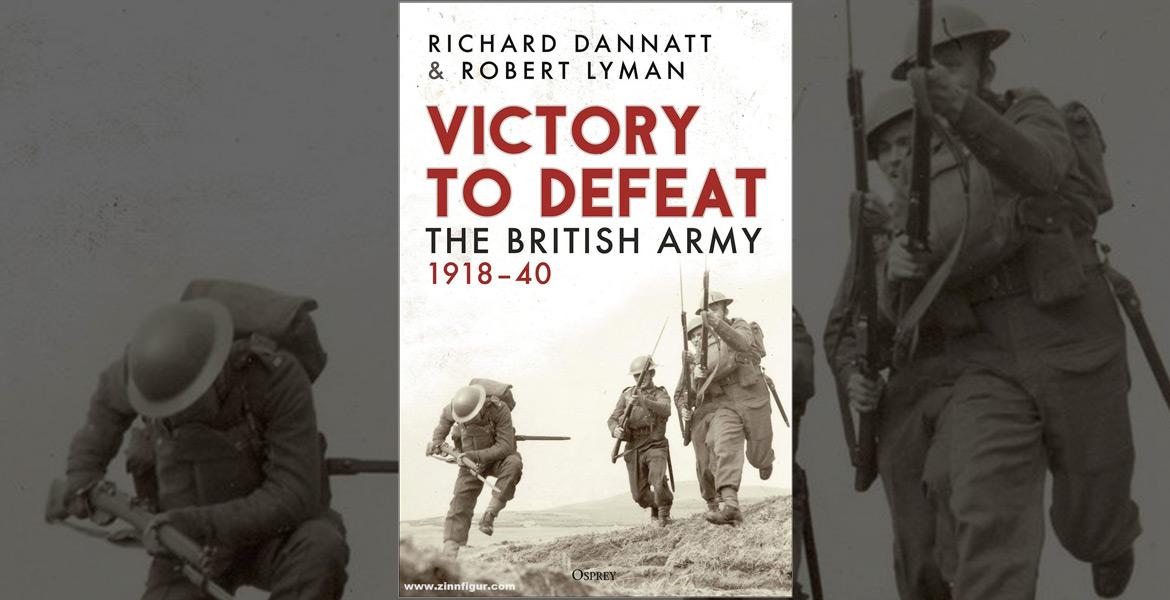Victory to Defeat, Richard Dannatt and Robert Lyman
Victory to Defeat asks a very simple, but rarely considered, question: how did Britain and her army go from victory in 1918 to crushing defeat at the hands of the same enemy in 1940? Through the 300-odd pages of the book, Richard Dannatt and Robert Lyman answer this question in convincing detail, considering not just the military aspects, but the political, social, and economic as well. It is an excellent analysis, given by experts in the field – Lyman spent two decades in the British Army and General The Lord Richard Dannatt was the United Kingdom's Chief of the General Staff. Their combined experience provides much-needed insight to this important subject.
Perhaps the most startling point is that generally few people – then or since – have really considered the armisticeAn agreement made by opposing sides in a war to stop fighting. signed in 1918 to be a proper victory. Surely it's just a case that the war of attritionA prolonged period of conflict during which each side seeks to wear down the other by a series of small-scale actions. and better marshalling of resources on the Allied side simply wore the Central Powers down to such an extent that they agreed to a peace accord that was vindictive and led the way to a resumption of hostilities twenty years later? Germany was not, therefore, defeated militarily – its army was, after all, still on foreign soil when it surrendered – but economically and politically. As such, it has never been necessary to analyse how the Allied armies won. But as Dannatt and Lyman prove beyond doubt, this is bunkum. Lessons were learnt slowly, yes, but they were still learnt, and by 1918 and the start of the Hundred Days campaign, the British Army was at the top of its game: a well-oiled fighting machine that intelligently used all the resources at its disposal to break through the lines of trenchesLong, narrow ditches while still protecting the lives (as much as possible) of its infantrySoldiers who fight on foot.. This, then, is the foundation on which the book is based, and it puts all the years that came after it into a completely new perspective.
There were, of course, many reasons for the army and other military services to be cut back after the 'War to End All Wars'. After all, there would never be another war like it, and it was impossible to keep military expenditure so high. The desire for peace, and remembrance of the horrors of the mud and blood of the trenches, would make anyone want to bury their heads in the sand, regardless of any more practical motives. There weren't the economic, social, or political incentives to keep the army operational in any meaningful sense. With hindsight, this was a mistake. Likewise, the army's inability to learn from its past experience and apply it to an imagined future scenario was also faulty.
According to the authors, there was plenty, given the right conditions, that could have been done to ensure that BlitzkriegGerman for 'lightning war'. An intense military campaign designed for quick victory. in 1940 did not succeed, or happen at all. Yet some of the suggestions are themselves little more than wishful thinking. The situation in which Britain found itself in the 1920s was far from perfect. With little money, exacerbated by additional pressures from catastrophic international financial events, social unrest, problems with empire, as well as the Troubles, it is difficult to see how in many respects the army and government could have behaved differently. But what holds true for the 1920s is harder to apply to the 1930s, especially after 1933, and this is where Victory to Defeat becomes particularly compelling and relevant. Although there was a determined effort to stick heads in sand, for those with the eyes and wit to see it Hitler was set on war. Godwin's LawA meme from the internet, now taken more generally, which suggests that the longer an online discussion continues, the chances of making a comparison with Hitler and/or Nazi Germany will become greater. always applies, but in recent years there have been others who have been ideologically fixed on expansion and used the excuse of national security and imagined wrongs to gain sympathy for their actions. And the simple, astounding fact is that the United Kingdom – indeed, much of Europe – is less prepared for war now than it was in 1930.
Although Victory to Defeat was conceived of before February 2022, its ulterior motive is to gain wider acceptance of the idea of increased military spending – a literal call to arms. The problem is that the country, perhaps rather like in the 1920s, is going through some severe political, social, and economic shocks: the needs of the military are not high on the agenda, and while there might be an argument for Keynesian spending, this could better be directed towards education, health, and all those other elements that visibly benefit the country. Pacifists will not, therefore, appreciate this book, but it is important they read it – at least to understand the very real challenges and problems faced by British governments and the military in the past. Historians find it easy to rail against the governments of the 1930s for determinedly following a policy of appeasement, for not preparing adequately, for believing there would never be another European war. Victory to Defeat makes it easier to understand the likes of Chamberlain and Baldwin: hindsight is 20/20; foresight is blinkered and myopic. This holds true for the twenty-first century as much as for the twentieth.
- Log in to post comments







